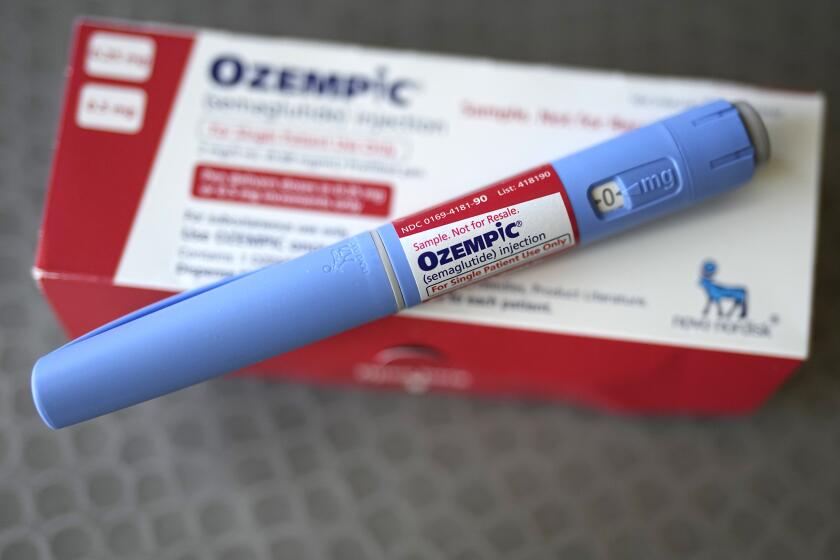17-year-olds like me deserve the right to vote in California’s presidential primaries
- Share via
In 2020, nearly a quarter of a million young Californians — myself included — will be ineligible to participate in the state’s primary election, despite being eligible to participate in the general election just a few months later. What gives?
A 2017 law moved California’s primary up from June to March. This more than doubled the number of people who will simultaneously be old enough to vote in November, but not old enough to vote in the corresponding primary.
According to Census Bureau data, approximately 200,000 Californians were born between March 3 and Nov. 3, 2002. That includes the majority of my high school graduating class of 2020, and it places a record number of soon-to-be 18-year-olds in an electoral gray zone. Despite our nominal right to participate in the 2020 presidential election, the inaccessibility of California’s primary locks us out of a key component in the decision-making process.
Without a voice in the primary, our only real choice in November 2020 will be whether to rubber stamp one of the nominees pre-selected by citizens whose interest in the outcome of the election is likely no greater than our own.
Lost to many of us will be the opportunity to meaningfully weigh in on an especially crowded Democratic field. There are nuances to the intraparty contest between Joe Biden and Kamala Harris, Elizabeth Warren and Andrew Yang or Cory Booker and Pete Buttigieg that will disappear before the apparently inevitable “Donald Trump vs. a Democrat” general election matchup.
Judging those nuances makes primary votes powerful, and as U.S. citizens who will be adults for the duration of the next presidential term, we ought to have a say in who the nominees are.
The importance of Californians having a say in the nominating contest has not been lost on state lawmakers. In late 2017, then-Gov. Jerry Brown signed the Prime Time Primary Act, pulling the statewide primary up to March for both presidential and nonpresidential election years.
The change strengthens California’s collective voice in the selection of presidential nominees, but it effectively doubles the number of eligible general election voters who will not be able to participate in California’s primary — those turning 18 between the elections in March and November.
It’s a great move for the state and a good way to disillusion young voters.
There is a solution that could help future 17-year-olds in this quandary: California should allow them to vote in presidential primaries if they will be 18 by the date of the corresponding general election. Twenty states with leadership across the ideological spectrum already allow this practice, including Mississippi, Kentucky, Maryland, Illinois, Delaware and Connecticut.
This change could be enacted without modifying any laws by petitioning the California Democratic Party and Republican Party to modify their charters — as their counterparts in five other states have done. But California’s “jungle” primary, in which all candidates from all parties run against one another, would make this a complicated endeavor: If only one party enacted the change, it would be giving itself a potentially unfair advantage.
A better solution, Assembly Constitutional Amendment 4, was introduced in January in the state Legislature. It would amend the California Constitution and give 17-year-olds going on 18 the same enfranchisement they already enjoy in nearly half the states. If approved by lawmakers, the proposed amendment would take the form of a legislatively referred initiative. California voters could be asked as soon as 2020 to decide the issue.
This is a personal issue for me as a 17-year-old who will be a week too young to participate in California’s March primary, but nearly eight months older than the youngest voters in the November election. I preregistered to vote the day I turned 16 and always have a stack of voter registration forms with me at school to help classmates do the same. It may be the naivete of youth, but little is more exciting to me than the fact that my generation will play a role in deciding the outcome of the 2020 election.
Polls show that this kind of enthusiasm is common among young voters, and studies suggest that, if nurtured, this eagerness to participate can transfer into a lifetime of civic engagement. Research also shows that voters who participate in the first two elections for which they are eligible are more likely to become voters for life.
States that have implemented amendments similar to the one being considered in California have seen young-voter turnout and retention skyrocket. Although it is too late for the class of 2020 to benefit from the proposed amendment, if it is not addressed soon the issue of gray-zone voters on the cusp of adulthood will persist into 2022, 2024 and beyond.
For many, the most persuasive argument in favor of this change may be that other states have already made it. For me, the most persuasive argument is the one I see every day at school — my senior class preparing to go out and engage with the world. We’re planning for our futures, figuring out what we want the world to look like and evaluating the available avenues for success.
Sounds like we’d make excellent voters.
Ryan Beam, 17, is a senior at Scotts Valley High School in Santa Cruz County.
More to Read
A cure for the common opinion
Get thought-provoking perspectives with our weekly newsletter.
You may occasionally receive promotional content from the Los Angeles Times.









